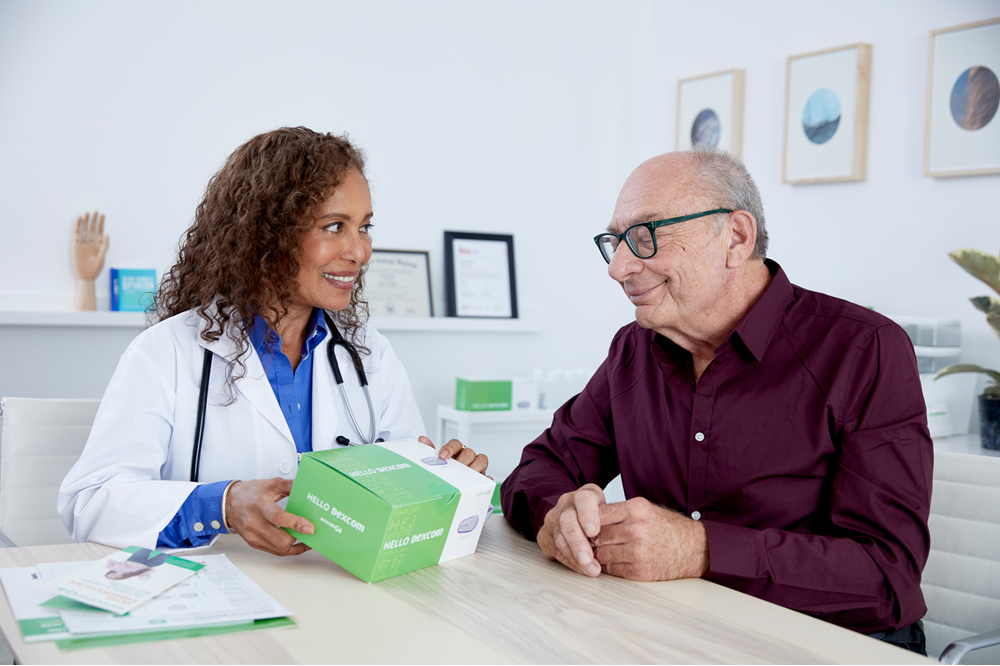MOBILE Trial Phase 2 Data Proves Lasting Impact of Continuous rtCGM Use in Type 2 diabetes
The 2021 MOBILE randomized-controlled clinical trial determined that the use of a real-time continuous glucose monitoring (rtCGM) device by patients with type 2 diabetes treated with basal insulin resulted in better glycemic outcomes compared to those using a capillary blood glucose (CBG) meter. This study was conducted in adults with poorly controlled type 2 diabetes treated with basal insulin without prandial insulin.
Previous CGM studies have only focused on people living with type 1 or type 2 diabetes using mealtime insulin. The 2021 MOBILE randomized-controlled clinical trial evaluated the glycemic impact of rtCGM and CBG devices by those only using basal insulin who were struggling to achieve recommended glycemic targets.
Phase 2 of the MOBILE trial was an extension of the study with the objective to examine the effect of discontinuing real-time continuous glucose monitoring after eight months of use.
The results of the MOBILE trial demonstrated that:
- Ongoing real-time continuous glucose monitoring use helps patients with type 2 diabetes on basal insulin improve their glycemic status.
- Approximately half of the benefits experienced by those using real-time continuous glucose monitoring for eight months were lost after a six-month discontinued use.
Phase 1: CGM More Effective Than CBG
In phase 1 of the MOBILE trial, 175 adults with poorly controlled type 2 diabetes treated with basal insulin were randomly assigned to use rtCGM (n=116) or a Bluetooth-enabled glucometer and test strips (n=59) for diabetes management. These devices would be used by study participants to determine if their hemoglobin A1C (HbA1C) and other glycemic measures could be improved.
The trial found that real-time continuous glucose monitoring users experienced a statistically greater average HbA1C decrease at eight months compared to capillary blood glucose monitoring users (−1.1% vs. −0.6%). Several other CGM-derived markers of glycemic status, such as time spent in the 3.9 to 10mmol/L range and time spent greater than 13.9mmol/L showed statistically and clinically significant treatment group differences.
Phase 2: Continued CGM Use Has Greatest Benefit
Phase 2 of the MOBILE trial set out to explore the effect of discontinuing real-time continuous glucose monitoring (rtCGM) after eight months of use in adults with type 2 diabetes treated with basal insulin. In Phase 1, participants were randomly assigned 2:1 to use either a real-time CGM system or CBG meter for diabetes management for eight months. This was followed in Phase 2 by six months in which the CBG monitoring group (n = 57) continued to use the device and the rtCGM group (n = 53) was randomly reassigned either to continue rtCGM or discontinue rtCGM and resume CBG monitoring for glucose management (n = 53).
Phase 2 of the study found that in the group that discontinued rtCGM, the average time in range (TIR) from 3.9-10.0 mmol/L, which had increased from 38 percent at baseline to 62 percent after eight months of rtCGM use, decreased by 12 percent or 3.6 hours/day to 50 percent after discontinuing rtCGM for six months. This group also experienced a worsening of their mean HbA1C from 7.9 percent prior to 8.2 percent after six-month discontinuation. In contrast, the group that continued to use rtCGM maintained the improved TIR level achieved after the initial eight months’ rtCGM use (baseline 44 percent, 56 percent after eight months, 57 percent after fourteen months, mean change from eight to fourteen months is 1 percent) . They also maintained the improved HbA1C level originally experienced after the first eight months of use (baseline 9.1 percent, 8.2 percent at month eight, 8.1 percent at month fourteen).
The study concluded that in adults with type 2 diabetes treated with basal insulin who had been using real-time CGM for eight months, discontinuing CGM resulted in a loss of about one-half of the initial gain in TIR and HbA1C that had been achieved during rtCGM use.

Improving Long-Term Outcomes in T2D
In light of these recent studies, it is important to consider the benefits of rtCGM with your type 2 diabetes patients on intensive insulin therapy and understand the positive impact of ongoing rtCGM use. While intermittent use of CGM devices, such as the Dexcom G6 Continuous Glucose Monitoring (CGM) System, can be a valuable educational experience for the patient and provide their clinician with additional insights into their glycemic levels, continuous long-term use has proven benefits and should be considered as part of an optimal care plan.
Evidence is fast emerging about the benefits of rtCGM use for people living with diabetes. This important technology is becoming more accessible to Canadian patients, as more public coverage options become available and education is more mainstream. Learn more about becoming a Dexcom G6 prescriber through the link below.
LBL-1000222 Rev001
